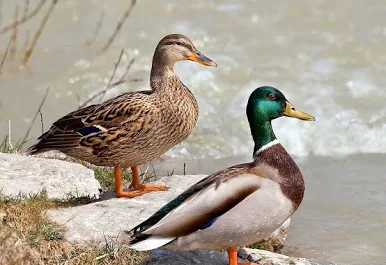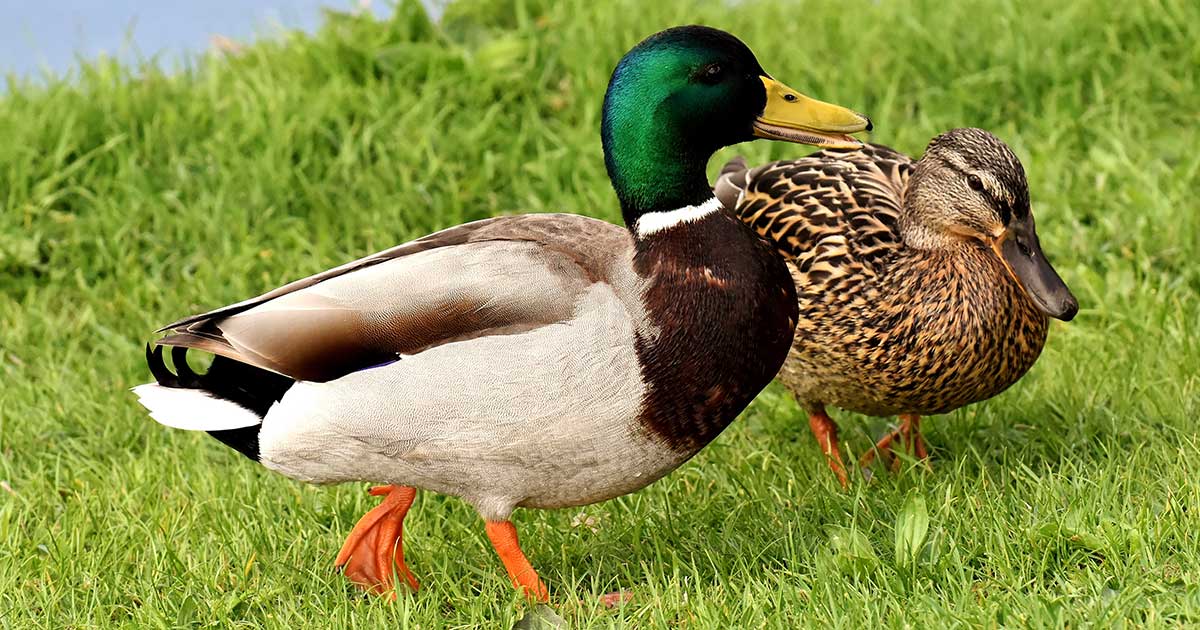Mallard (Gräsand)


Characteristics:
The mallard is Sweden’s most common duck, 50–60 cm long. The male has a glossy green head, white neck ring, brown chest, and grey body with a black tail and a blue wing patch. The female is mottled brown with an orange bill marked by a dark saddle. Both sexes have a bright blue speculum (wing patch) that is visible in flight.
Habitat:
Common throughout Sweden in lakes, ponds, rivers, bays, and even city parks. Many migrate south in winter, while others stay where water remains unfrozen.
Diet:
Omnivorous – eats seeds, aquatic plants, insects, small crustaceans, and occasionally small fish.
Young:
The female lays 8–12 eggs in a nest close to water. The eggs hatch after about four weeks, and the ducklings can swim almost immediately after hatching.
Call:
The female makes the familiar “quack-quack”, while the male produces a softer, nasal “rääb”.
Tracks:
Mallard footprints show webbed toes, about 6–8 cm long, often seen in mud or snow near water.
Hunting:
Hunted in autumn, mainly through stalking or flight shooting at dawn and dusk.
Firearm class:
Mallard hunting requires a class 3 or 4 shotgun, suitable for small game and birds.
